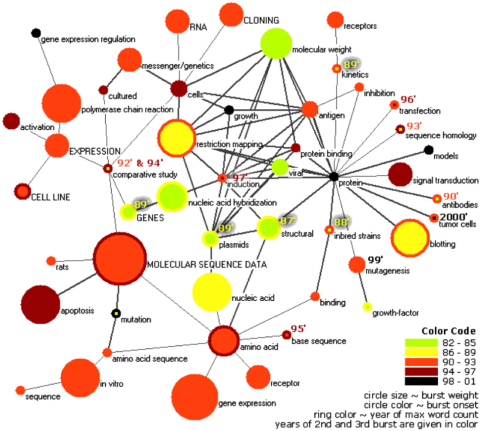6.1.1 Mapping Topics and Topic Bursts in PNAS (2004)
By Ketan K. Mane & Katy Börner (2004)
Scientific research is highly dynamic. New areas of science continually evolve; others gain or lose importance, merge, or split. Due to the steady increase in the number of scientific publications, it is hard to keep an overview of the structure and dynamic development of one's own field of science, much less all scientific domains.
However, knowledge of ''hot'' topics, emergent research frontiers, or change of focus in certain areas is a critical component of resource allocation decisions in research laboratories, governmental institutions, and corporations. This paper demonstrates the utilization of Kleinberg's burst detection algorithm, co-word occurrence analysis, and graph layout techniques to generate maps that support the identification of major research topics and trends. The approach was applied to analyze and map the complete set of papers published in PNAS in the years 1982--2001. Six domain experts examined and commented on the resulting maps in an attempt to reconstruct the evolution of major research areas covered by PNAS.
Co-word space of the top 50 highly frequent and bursty words used in the top 10% most highly cited PNAS publications in 1982--2001.
